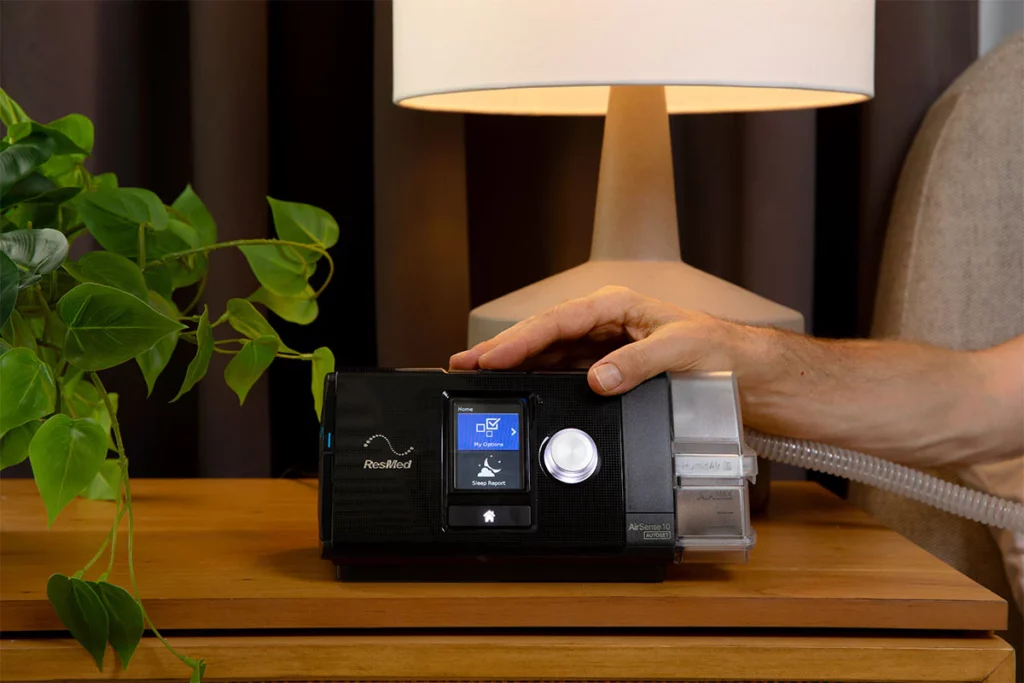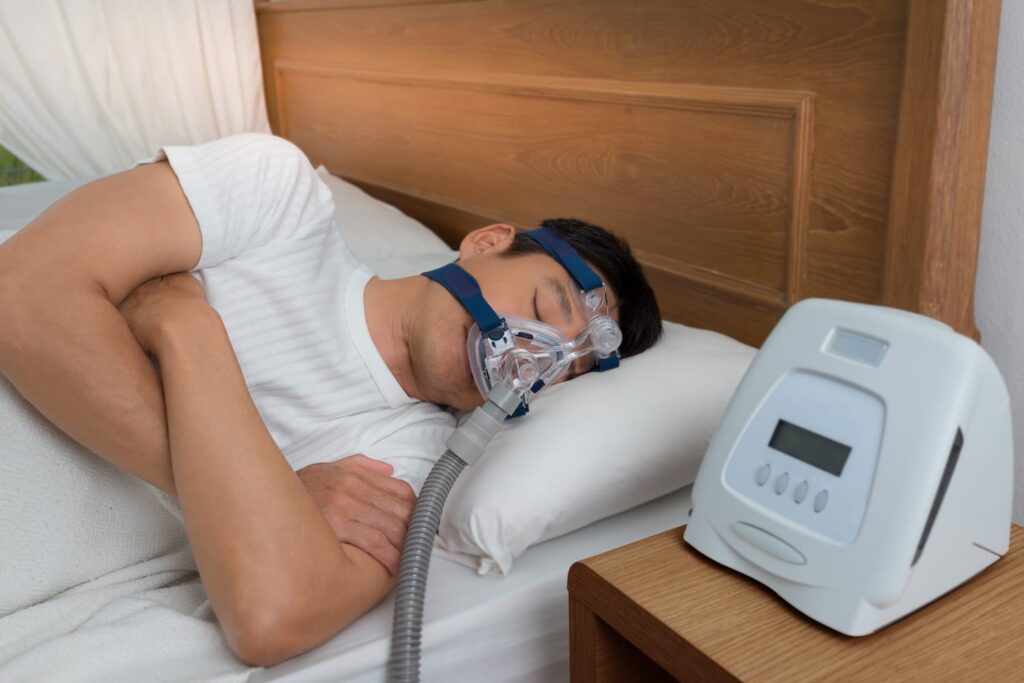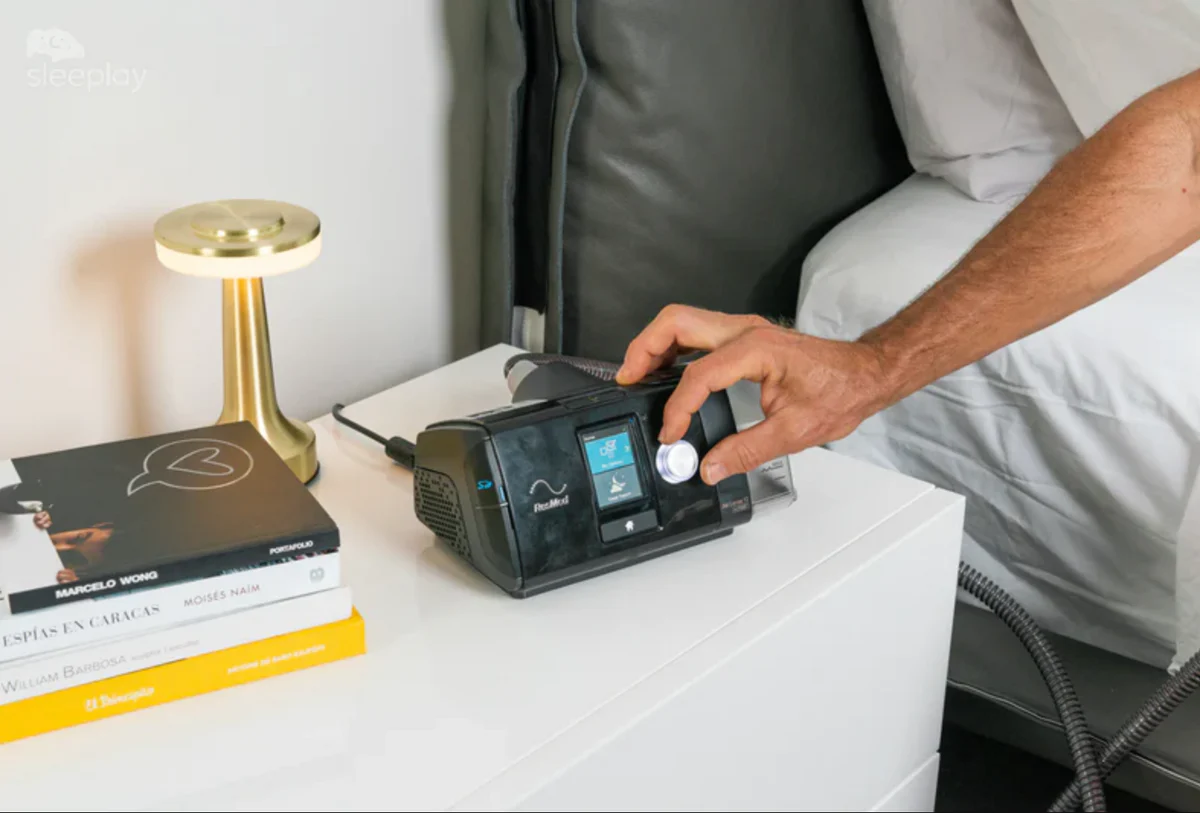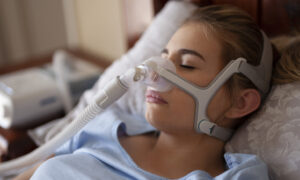Understanding CPAP Machines
Continuous Positive Airway Pressure (CPAP) machines are essential devices for individuals suffering from obstructive sleep apnoea (OSA). They work by delivering a steady stream of air to keep the airways open during sleep. This not only improves the quality of sleep but also reduces the risk of associated health issues such as cardiovascular problems and daytime fatigue.
Choosing the right CPAP machine is crucial for ensuring effective treatment. With various models and features available, understanding the basics of CPAP technology can help in making an informed decision.
Types of CPAP Machines
There are several types of CPAP machines available on the market, each designed to cater to different needs. The most common types include:
- Standard CPAP: This is the most basic type, providing a constant air pressure throughout the night.
- Auto-Adjusting CPAP (APAP): This type automatically adjusts the pressure based on the user’s needs, providing comfort and efficiency.
- Bilevel Positive Airway Pressure (BiPAP): BiPAP machines offer two levels of pressure: one for inhalation and a lower one for exhalation, making it easier for some users to breathe.
In addition to these primary types, there are also specialised CPAP machines designed for specific conditions or preferences. For instance, some models come equipped with humidifiers, which add moisture to the air, alleviating dryness in the throat and nasal passages that can occur during use. This feature is particularly beneficial for individuals who live in dry climates or those who experience nasal congestion. Furthermore, many modern CPAP machines are equipped with advanced technology that includes built-in data tracking, allowing users and healthcare providers to monitor usage patterns and effectiveness over time.
When selecting a CPAP machine, it is also essential to consider the comfort of the mask. There are various styles available, including nasal masks, full-face masks, and nasal pillows, each catering to different sleeping positions and preferences. A well-fitted mask can significantly enhance the user experience, reducing the likelihood of discomfort or air leaks that can disrupt sleep. Additionally, some machines offer features like ramp settings, which gradually increase air pressure to help users fall asleep more comfortably. Understanding these nuances can greatly influence the success of CPAP therapy and overall satisfaction with the treatment.

Factors to Consider When Choosing a CPAP Machine
Selecting the right CPAP machine involves considering several factors that can significantly impact the effectiveness of treatment and overall comfort. Here are some key aspects to keep in mind:
Pressure Settings
Understanding the pressure settings is fundamental when choosing a CPAP machine. Most machines allow for a range of pressure settings, which can be adjusted based on the severity of the sleep apnoea. Consulting with a healthcare professional is essential to determine the appropriate pressure level for individual needs.
Some machines come equipped with a ramp feature, which gradually increases the pressure to the prescribed level, making it easier for users to fall asleep.
Read about cpap mask at: Get the Perfect Fit A Beginner’s Guide to Choosing CPAP Masks
Noise Levels
Noise can be a significant factor for many users. Some CPAP machines operate quietly, while others may produce a noticeable hum. Look for machines that are specifically marketed as quiet or have sound-dampening features, especially if sharing a bed with a partner.
Reading reviews and seeking recommendations can provide insights into the noise levels of various models, helping to ensure a peaceful night’s sleep. Read more about noise at https://magazine.hms.harvard.edu/articles/noise-and-health
Portability
For those who travel frequently, the portability of a CPAP machine can be a vital consideration. Many manufacturers offer lightweight and compact models that are easy to pack and transport. Additionally, some machines come with battery options, making them suitable for use in locations without easy access to power.
When assessing portability, consider the size, weight, and whether the machine comes with a travel case or accessories that facilitate travel.

Comfort Features
Comfort is paramount when using a CPAP machine, as it can significantly affect adherence to treatment. Various features can enhance comfort, making it easier for users to adjust to their new routine.
Mask Types
The type of mask used with a CPAP machine can greatly influence comfort and effectiveness. There are three primary types of masks:
- Nasal Masks: Cover the nose and are suitable for individuals who breathe through their nose.
- Full-Face Masks: Cover both the nose and mouth, ideal for users who breathe through their mouth or require higher pressure. Click here to find more about pressure.
- Nasal Pillows: Insert directly into the nostrils, providing a minimalistic option for those who feel claustrophobic with larger masks.
Trying different masks is essential to find the most comfortable fit. Many suppliers offer trial periods or return policies to facilitate this process.
Humidification
Dry air can lead to discomfort, including nasal congestion and throat irritation. Many CPAP machines come with built-in humidifiers that add moisture to the air, enhancing comfort during use. These humidifiers can often be adjusted to suit individual preferences, ensuring a more pleasant experience.
Consideration should also be given to the ease of cleaning and maintaining the humidifier, as this can affect long-term satisfaction with the device.
Smart Technology and Connectivity
In recent years, many CPAP machines have integrated smart technology, allowing users to track their usage and sleep patterns through mobile apps or online platforms. This feature can provide valuable insights into treatment effectiveness and help users stay engaged with their therapy.
Data Tracking
Data tracking features can monitor various metrics, such as hours of use, leak rates, and apnea events. This information can be shared with healthcare providers, enabling them to make informed adjustments to treatment plans. Users can also benefit from visualising their progress, which can be motivating.
Remote Monitoring
Some advanced CPAP machines offer remote monitoring capabilities, allowing healthcare providers to access patient data without the need for in-person visits. This feature can lead to quicker adjustments and improved patient outcomes, making it a valuable consideration for those who prefer a more hands-off approach to their treatment.
Cost and Insurance Coverage
The cost of CPAP machines can vary significantly based on features and technology. It is essential to consider budget constraints when selecting a machine. Many insurance plans cover CPAP therapy, but the extent of coverage can differ.
Understanding Costs
When evaluating costs, consider not only the initial price of the machine but also ongoing expenses such as masks, filters, and humidifier water. Some suppliers offer rental options, which may be a more affordable way to access a CPAP machine while determining the best fit.
It is advisable to check with insurance providers regarding coverage and any potential out-of-pocket expenses before making a purchase.
Exploring Financial Assistance
For those without insurance coverage or facing high out-of-pocket costs, various financial assistance programs may be available. Non-profit organisations and manufacturers sometimes offer support for individuals in need, making it worthwhile to explore these options.
Consulting with Healthcare Professionals
Ultimately, the best way to choose a CPAP machine is to consult with healthcare professionals. They can provide tailored recommendations based on individual health needs and preferences.
Sleep Studies
Many healthcare providers recommend undergoing a sleep study to determine the severity of sleep apnoea and the appropriate pressure settings for a CPAP machine. This assessment can provide invaluable insights, ensuring that the chosen device meets specific requirements.
Follow-Up Care
Regular follow-up appointments can help monitor progress and make necessary adjustments to the treatment plan. Healthcare providers can assist in troubleshooting any issues that arise, ensuring that users remain compliant with their therapy.
Conclusion
Choosing the right CPAP machine is a critical step in managing obstructive sleep apnoea effectively. By considering factors such as pressure settings, comfort features, smart technology, and cost, individuals can make informed decisions that enhance their quality of sleep and overall health.
Consulting with healthcare professionals and utilising available resources can further ensure that the selected machine meets specific needs, ultimately leading to a more successful treatment experience. With the right CPAP machine, restful nights and improved daytime functioning are well within reach.

